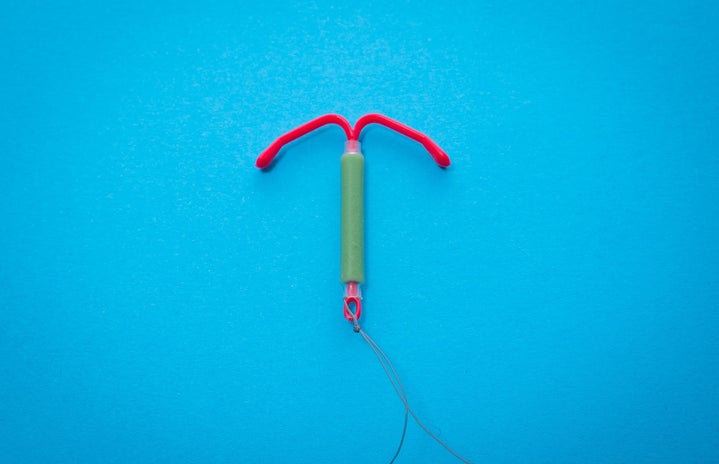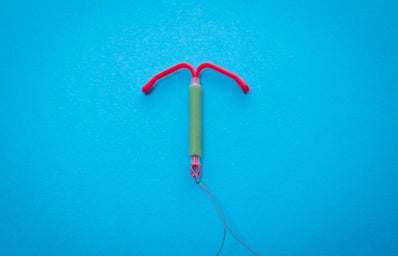I started my journey with birth control back in high school. My periods were so debilitating that for years I’d missed classes due to the excruciating cramps and heavy flow I was experiencing. I was miserable. Finally, my mother agreed to take me to a gynecologist to fix the problem. I asked to start birth control to attempt to manage the pain and heavy bleeding, instead, my doctor prescribed me a high dose of ibuprofen. Apparently, I was old enough for prescription pain meds but not the pill. Nothing changed. I was still in intense pain and using night-time pads in an hour. A year later I went back to the same doctor and she and my mother finally agreed to start me on birth control. I was given progestin only pills because my mother had a blot clot once a decade ago. No one ordered blood work to see if I was prone to blood clots and if there were other options for me.
I started college, religiously took my pills, and noticed absolutely no difference in my period pain or flow. But why did I continue taking it? Before the pill I had an extremely irregular period. On the pill, I started having a period I could track and predict. It was a small win. It helped that I knew if I took it on time it was also another form of birth control. Though, with the progestin only pill, it must be taken within the same hour you usually take it for it to be effective.
Nearly three years later I decided I’m sick of the pill. I hated having to take medication at a specific time every night. I hated worrying that if I take it too late that it will mess with my body and not be an effective method of birth control. I hated that it didn’t help my cramps or flow. On top of all of that, I noticed I had started having intense mood swings; there were whole days I felt like crying for no reason. I was getting painful acne right before every period. My hunger changed with my cycle. My birth control was wreaking havoc on my body, and I was done. I went to a new gynecologist and expressed these concerns. She diagnosed me with endometriosis and did blood work to see if I’m prone to blood clotting all within two visits. A large part of my experience with birth control consists of medical negligence. My new doctor talked to me about different options, and I was intrigued about the IUD. I felt even better about it because she said she had one herself; I had found a doctor that listened and could relate to me.
I was told that the IUD would likely stop my periods altogether and that after insertion that was it, no more pills at certain hours, it started working immediately. I was told that it wasn’t very painful and that I had the option to have a singular pain pill prescribed to me to take an hour before insertion. I opted for the medication but in no way was aware that I would actually need it. I’m sure many of you have seen the TikToks showing the insertion procedure on medical models. I thought there was no way they actually pierce the cervix to hold it still for insertion.
I arrived at my appointment feeling the effects of my one pill and thought it would be enough for whatever pain I would experience. A nurse gave me a card saying my IUD, the Mirena, would be good for 8-10 years. I had no idea it lasted that long. I found out a lot just minutes before the appointment, and even more after it. This is a large part of why I’m writing this, I don’t want anyone to feel as underprepared as I was.
My doctor showed me the tools she would be using for the insertion once I already had my feet in the stirrups and the anxiety started to hit me. I consider myself to have a high pain tolerance: I’ve given myself multiple tattoos, dealt with endometriosis for years, but I started to wonder if the TikTok horror stories were true. My doctor suddenly asked me if I was allergic to betadine since they would be using it. If you’re a fan of medical shows you’ve probably seen this stuff, it’s that weird brown liquid that the doctors put on patients during surgery to keep the open wounds clean. Right then I knew I would be leaving the appointment with two new holes in my cervix. She then showed me a long plastic stick that is a little smaller around than a straw. “This is what I’ll use to measure your cervix,” she said. I started sweating at that point.
They pried me open with a speculum and told me to cough so they could get a hold of my cervix. The next part was the worst. And by the worst I mean the worst pain I’ve ever felt in my life. The doctor picked up these things that looked like long scissors that had curved ends. It was exactly like all the videos. They pierce the cervix and hold it in place for the remainder of the procedure. Next, they stuck the ‘ruler’ up my cervix. It was as pleasant as it sounds. They told me after that normally they do insertions on women who have given birth before because by then you barely feel anything. The ‘cramps’ they tell you you’ll feel are worse than any period cramp I’d ever felt, and I’m guessing feel closer to childbirth. After that they inserted the IUD itself and had to hold it in place for ten seconds. Those ten seconds felt like an eternity. After that they took everything out and I had expected the pain to subside since the scissor things were no longer there, but it didn’t wane at all. I felt close to passing out. I’m someone who has never minded getting shots or blood drawn, never felt lightheaded during any of that, but I felt so drained after the procedure. They used the betadine and told me that they were done and that I could lay there as long as I needed. I’ve been awake to get teeth pulled before with no complaints, but I laid on that table after getting my IUD without moving for thirty minutes.
No, they don’t numb anything. No, the medication they prescribe doesn’t help. And yes, the pain I would feel was undersold to me in previous consultations. I barely moved the rest of the day. The two weeks following I was in pain without relief and was bleeding similar to a period. For almost two months I was bleeding or spotting after getting my IUD. I wondered if something was wrong with me and googled it, but apparently, it is normal for bleeding for several months to occur. I was even lucky that it only lasted two. I was told I would stop having a period the moment my IUD was inserted. Even better, when I was googling, I discovered that IUDs have strings attached to them. I nearly threw up that day. Something about the idea that there are strings running from my IUD in my uterus down my cervix and into my vagina is just really unsettling. Everything online says I am supposed to check monthly to see if I can feel the strings in place, otherwise it means the IUD has moved out of place, which is a very dangerous thing. I hadn’t even known this was possible. No one had told me. No one even told me to check the strings let alone that they were there.
Knowing what I know, or felt now, would I still get the IUD? Honestly, I still go back and forth about this. I haven’t had a period since those initial months of bleeding and cramps which has been nice. I’ve gotten more comfortable with the idea that there are strings inside my body. I do like not having to worry about taking a pill. I haven’t had mood swings, my acne cleared up, and I generally feel better. I’ve even had multiple people tell me my face looks less puffy. So yes, it works. Sometimes I will get a random cramp like feeling that I’ve come to believe is something to do with the IUD. Sometimes these cramps happen after sex as well, which I suppose makes sense since it could be moving it slightly or just agitating the area. All this being said, getting the IUD was the worst pain I’ve ever felt in my life, and I wish I could impress this upon people more, but I don’t have a way to make others understand truly how much it hurts and for how long. Walking was torture but the pain didn’t subside with lying down, ibuprofen, or a heating pad. I just hope if anyone is considering it that they make the decision more informed than I had been.

